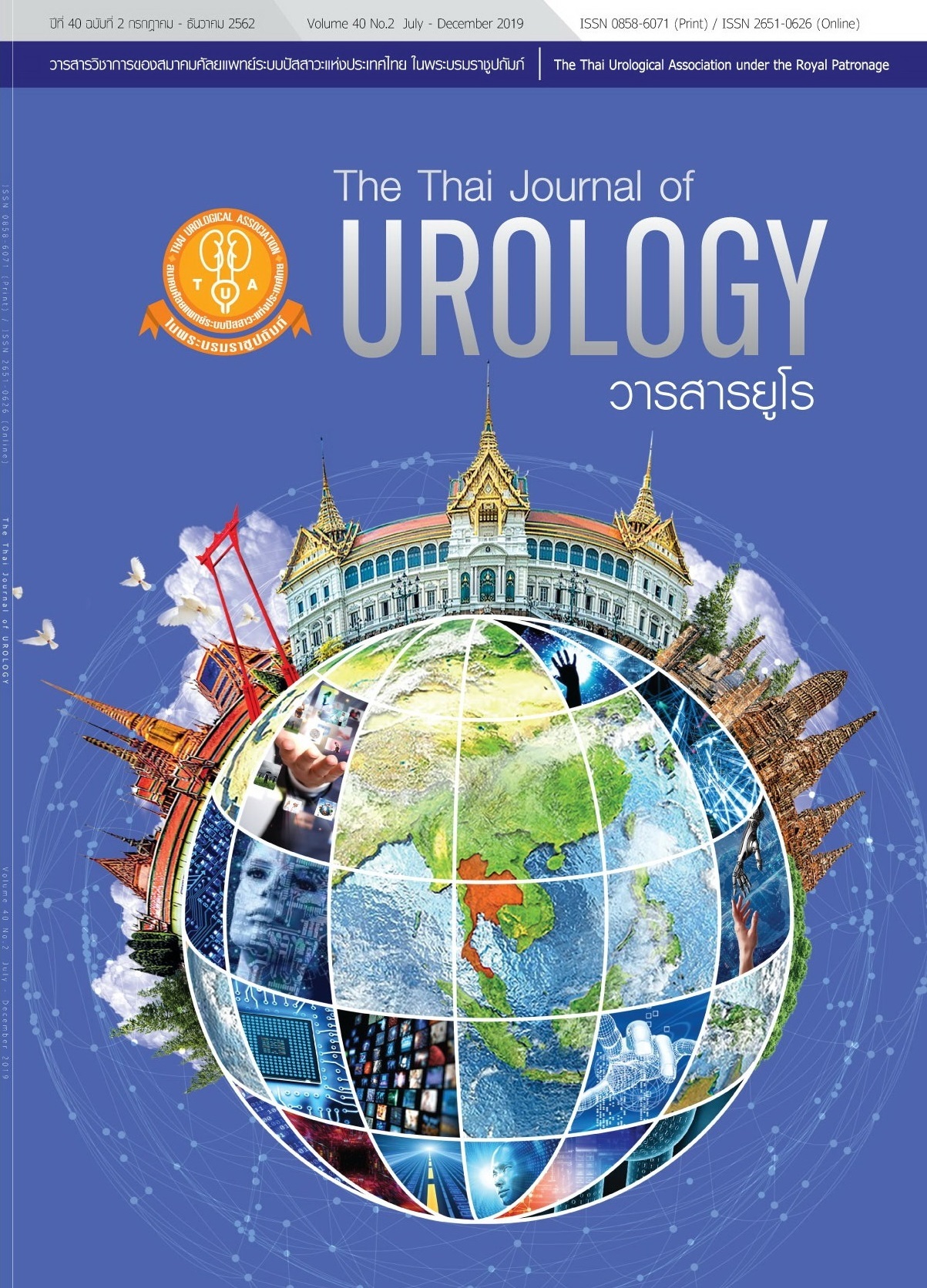Native ureter substitution for entire necrotized ureter after cadaveric kidney transplantation: A case report.
Keywords:
Necrotized ureter, kidney transplantation, native ureterAbstract
Native ureter substitution for entire necrotized ureter after cadaveric kidney transplantation: A case report.
Satit Siriboonrid MD, Sarayuth Kanrchanatarayont MD, Vittaya Jiraanankul, Veerayuth Viriyabundithkul MD and Nattapong Binsri MD
Division of Urology, Department of Surgery, Phramongkutklao Hospital, Bangkok, Thailand
Introduction
Kidney transplantation is the best of kidney replacement therapies for end stage renal disease patients due to best results and less mobilities when compare to hemodialysis that bring it more popular in Thailand. Even though less complications, but some complication can make morbidity and in the worst case is graft loss. Ureteral necrosis is one of those complications.
Case description
50-year-old received allograft from cadaveric donor with prolonged cold ischemic time. Extensive dissection when procurement make naked renal pedicle and entire ureter. After procedure of transplantation, urine still leakage to drainage site. Conservative measurement was unsuccessful. Native ureter was recruited for long-defect correction.
Result
Native pyeloureterostomy was done with retained larger bore ureteric stent. Urinary leakage was stoped in the first day. All of catheters were removed in same duration of non-complicated case of kidney transplantation. Allograft was good function, and hemodialysis was withdrawn from this case.
Conclusion
Native ureter substitution is one of choice of entire necrotized ureter that provide good results and accepted complication.
Key words: Necrotized ureter, kidney transplantation, native ureter
References
2. Thrasher JB, Temple DR, Spees EK (1990) Extravesical versus Leadbetter- Politano ureterneocystostomy: a com- parison of urological complications in 320 renal transplants. J Urol 1 4 4 1105-1109
3. Corriere JN, Perloff LJ, Barker CF, Henderson LW, Schoenberg HW, Mur- phy JJ (1973) The ureteropyelostomy in human renal transplantation. J Urol 110:24-26
4. Greenberg SH, Wein AJ, Perloff LJ, Barker CF (1977) Ureteropyelostomy and ureterneocystostomy in renal transplantation: postoperative urologi- cal complications. J Urol 118:17-19
5. Jaffers GJ, Cosimi AB, Delmonico FL, LaQuaglia MP, Russell PS, Young HH (1982) Experience with pyeloureteros- tomy in renal transplantation. Ann Surg 196: 588-593
6. Politano VA, Leadbetter W F (1958) An operative technique for the correction of vesicoureteral reflux. J Urol79: 932-935
7. Gedroyc WM, Koffman G, Saunders
A J (1988) Ureteric obstruction in stent- ed renal transplants. Br J Urol62: 123-126
8. Campbell SC, Streem SB, Zelch MG (1993) Percutaneous management of transplant ureteral fistulas: patient se- lection and long-term results. J Urol 150: 1115-1117
9. Schiff M, Lytton B (1981) Secondary pyeloureterostomy in renal transplant recipients. J Uroll26: 723-725
10. Decurtins M, Vogt N, Largiader F (1992) Secondary pyeloureterostomy after ureter necrosis in renal transplant recipients. Urol Int 49: 9C93



